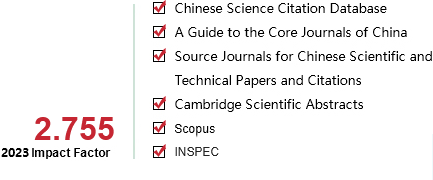[1]PAN Deng,BI Xiaojun.Classification of functional magnetic resonance images for autism based on Transformer model[J].CAAI Transactions on Intelligent Systems,2025,20(2):400-406.[doi:10.11992/tis.202402025]
Copy
Classification of functional magnetic resonance images for autism based on Transformer model
CAAI Transactions on Intelligent Systems[ISSN 1673-4785/CN 23-1538/TP] Volume:
20
Number of periods:
2025 2
Page number:
400-406
Column:
学术论文—机器感知与模式识别
Public date:
2025-03-05
- Title:
- Classification of functional magnetic resonance images for autism based on Transformer model
- Keywords:
- deep learning; Transformer; attention mechanism; autism; functional magnetic resonance imaging; image classification; feature extraction; functional connectivity
- CLC:
- TP391
- DOI:
- 10.11992/tis.202402025
- Abstract:
- Current classification models of functional magnetic resonance (fMRI) images for autism struggle with low classification accuracy across datasets from multiple institutions. Thus, they have difficulty assisting in the diagnosis of autism. This study proposes a Transformer-based autism classification model named TransASD to address this issue. This model utilizes brain mapping templates to extract time series from fMRI data and incorporates an overlapping window attention mechanism to better capture local and global features of heterogeneous data. A cross-window regularization method is also proposed as an additional loss term, which allows the model to focus more accurately on important features. In this study, we use the model to conduct experiments on the publicly available autism dataset ABIDE, under the ten-fold cross-validation method, the accuracy rate is 71.44%. Experimental results show that the model achieves state-of-the-art performance compared with other advanced algorithmic models.
- References:
-
[1] LYALL K, CROEN L, DANIELS J, et al. The changing epidemiology of autism spectrum disorders[J]. Annual review of public health, 2017, 38: 81-102.
[2] NICKEL R E, HUANG-STORMS L. Early identification of young children with autism spectrum disorder[J]. Indian journal of pediatrics, 2017, 84(1): 53-60.
[3] CHUNG T, CORNELIUS J, CLARK D, et al. Greater prevalence of proposed ICD-11 alcohol and cannabis dependence compared to ICD-10, DSM-IV, and DSM-5 in treated adolescents[J]. Alcoholism, clinical and experimental research, 2017, 41(9): 1584-1592.
[4] KHODATARS M, SHOEIBI A, SADEGHI D, et al. Deep learning for neuroimaging-based diagnosis and rehabilitation of autism spectrum disorder: a review[J]. Computers in biology and medicine, 2021, 139: 104949.
[5] CROSSON B, FORD A, MCGREGOR K M, et al. Functional imaging and related techniques: an introduction for rehabilitation researchers[J]. Journal of rehabilitation research and development, 2010, 47(2): vii-xxxiv.
[6] GREICIUS M. Resting-state functional connectivity in neuropsychiatric disorders[J]. Current opinion in neurology, 2008, 21(4): 424-430.
[7] EL-GAZZAR A, QUAAK M, CERLIANI L, et al. A hybrid 3DCNN and 3DC-LSTM based model for 4D spatio-temporal fMRI data: an ABIDE autism classification study[M]//OR 2.0 Context-Aware Operating Theaters and Machine Learning in Clinical Neuroimaging. Cham: Springer International Publishing, 2019: 95-102.
[8] SHERKATGHANAD Z, AKHONDZADEH M, SALARI S, et al. Automated detection of autism spectrum disorder using a convolutional neural network[J]. Frontiers in neuroscience, 2020, 13: 1325.
[9] 郭磊, 王骏, 丁维昌, 等. 4D卷积神经网络的自闭症功能磁共振图像分类[J]. 智能系统学报, 2021, 16(6): 1021-1029.
GUO Lei, WANG Jun, DING Weichang, et al. Classification of the functional magnetic resonance image of autism based on 4D convolutional neural network[J]. CAAI transactions on intelligent systems, 2021, 16(6): 1021-1029.
[10] VASWANI A, SHAZEER N, PARMAR N, et al. Attention is all you need[C]//Proceedings of the 31st International Conference on Neural Information Processing Systems. Long Beach: ACM, 2017: 6000–6010.
[11] DENG Xin, ZHANG Jiahao, LIU Rui, et al. Classifying ASD based on time-series fMRI using spatial–temporal transformer[J]. Computers in biology and medicine, 2022, 151: 106320.
[12] DOSOVITSKIY A, BEYER L, KOLESNIKOV A, et al. An image is worth 16x16 words: Transformers for image recognition at scale[EB/OL]. (2020-10-22)[2024-02-26]. https://arxiv.org/abs/2010.11929.
[13] ZHENG Sixiao, LU Jiachen, ZHAO Hengshuang, et al. Rethinking semantic segmentation from a sequence-to-sequence perspective with transformers[C]//2021 IEEE/CVF Conference on Computer Vision and Pattern Recognition. Nashville: IEEE, 2021: 6877-6886.
[14] LI Guang, ZHU Linchao, LIU Ping, et al. Entangled transformer for image captioning[C]//2019 IEEE/CVF International Conference on Computer Vision. Seoul: IEEE, 2019: 8928-8937.
[15] PARMAR N, VASWANI A, USZKOREIT J, et al. Image transformer[C]//International conference on machine learning. Stockholm: PMLR, 2018: 4055-4064.
[16] HONG Danfeng, HAN Zhu, YAO Jing, et al. SpectralFormer: rethinking hyperspectral image classification with transformers[J]. IEEE transactions on geoscience and remote sensing, 2021, 60: 5518615.
[17] CARION N, MASSA F, SYNNAEVE G, et al. End-to-end object detection with transformers[C]//Computer Vision–ECCV 2020. Cham: Springer International Publishing, 2020: 213-229.
[18] BEAL J, KIM E, TZENG E, et al. Toward transformer-based object detection[EB/OL]. (2020-12-17) [2024-02-26]. https://arxiv.org/abs/2012.09958.
[19] LIU Ze, LIN Yutong, CAO Yue, et al. Swin transformer: hierarchical vision transformer using shifted windows[C]//2021 IEEE/CVF International Conference on Computer Vision. Montreal: IEEE, 2021: 9992-10002.
[20] FUSHIKI T. Estimation of prediction error by using K-fold cross-validation[J]. Statistics and computing, 2011, 21(2): 137-146.
[21] MAENNER MATTHEW J, MARSHALYN Y A, KIM V N B, et al. Development of a machine learning algorithm for the surveillance of autism spectrum disorder[J]. PLoS One, 2016, 11(12): e0168224.
[22] ABRAHAM A, MILHAM M P, DI MARTINO A, et al. Deriving reproducible biomarkers from multi-site resting-state data: an Autism-based example[J]. NeuroImage, 2017, 147: 736-745.
[23] YAN Chaogan, WANG Xindi, ZUO Xinian, et al. DPABI: data processing & analysis for (resting-state) brain imaging[J]. Neuroinformatics, 2016, 14(3): 339-351.
[24] SCHAEFER A, KONG Ru, GORDON E M, et al. Local-global parcellation of the human cerebral cortex from intrinsic functional connectivity MRI[J]. Cerebral cortex, 2018, 28(9): 3095-3114.
- Similar References:
Memo
-
Last Update:
2025-03-05
